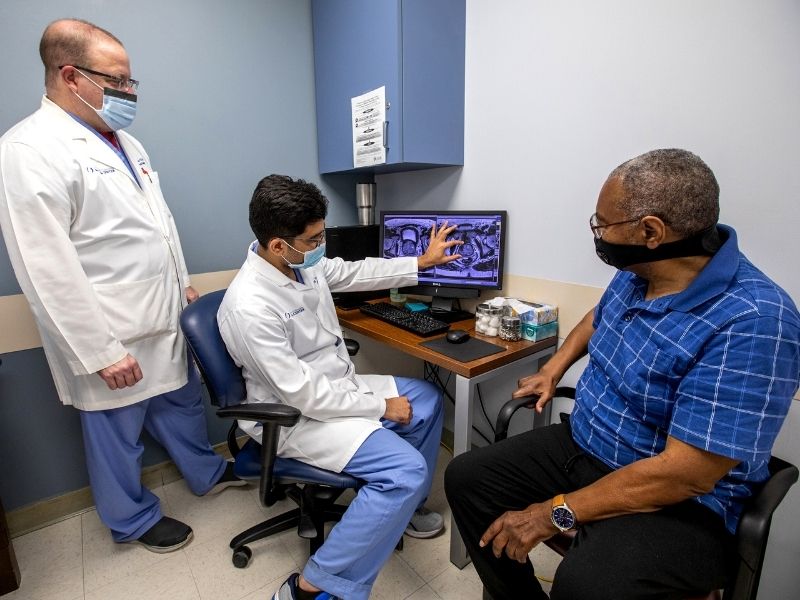Procedure to ease prostate obstruction improves patients’ quality of life

When an enlarged prostate led to urination problems, Jasper County resident Raleigh Bogan sought help from specialists at the University of Mississippi Medical Center.
Bogan was diagnosed with benign prostatic hyperplasia in 2016. He said his symptoms had worsened in late 2019, and medications didn’t give him relief.
The U.S. Army veteran saw UMMC’s Dr. Jay Vasani, assistant professor of interventional radiology. Vasani told him about a procedure that is relatively new to UMMC, prostate artery embolization. The procedure is minimally invasive and an alternate to a simple prostatectomy, or complete removal of the prostate gland.
Bogan had the surgery on March 12. Today, “I’m doing much better than when all this took place,” Bogan said.

After age 60, about 50 percent of men have lower urinary tract complications due to an enlarged prostate, Vasani said. That often makes it difficult to urinate, he said.
Nodules in the prostate cause the urethra to be obstructed. Bladder thickening due to the enlarged prostate and straining can prevent the bladder from completely filling, although a patient has the sensation that it is full, Vasani said. “The frequency of urination increases, but you aren’t able to completely empty your bladder,” he said.
It’s common for patients with the obstruction to awaken three or four times a night for trips to the bathroom. “It disturbs your sleep and quality of life,” Vasani said.
The primary treatment for the condition has been medication to relax the prostate. “If you get good relief, you don’t need to do anything else,” Vasani said “But many times, the medications have side effects. This procedure is a good fix and a safe alternative to surgery.”
The physician performs outpatient surgery lasting one to two hours using conscious sedation. A small puncture is made in the patient’s upper thigh or waist, and wires and a small catheter are inserted and guided into the prostatic arteries that supply blood to the prostate.
Blood supply to the prostate gland is blocked, causing the problematic tissue to die and the prostate to shrink. That allows urine to more easily flow.
“If there is no blood supply, the nodules die on their own or become soft,” Vasani said. “The pressure on the urethra decreases.”
Recovery takes three to four hours, and patients generally go home the same day.
There is no significant incision, but instead, a small cut in the skin that is covered post-procedure with a Band-Aid, Vasani said. “For the next five to seven days, the patient might have some pain because the prostate gland is inflamed, but it can be controlled with over-the-counter medications.”
Bogan, who became a truck driver after his military service, said he’s glad he had the procedure. Six weeks after his surgery, he had his catheter removed.
“It took a while for everything to fall into place (after the surgery), but Dr. Vasani would call and check on me to see how I was,” he said. “I’m doing fine.”


